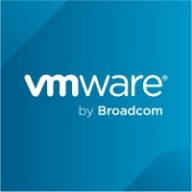

ScienceLogic and VMware vCenter are two leading IT management solutions. Users generally prefer the comprehensive features of VMware vCenter despite its higher pricing, whereas ScienceLogic is appreciated for its cost-effectiveness and support quality.
Features: ScienceLogic offers powerful automation, real-time monitoring, and exceptional network monitoring capabilities. VMware vCenter is praised for robust virtualization management, seamless integration with VMware tools, and advanced virtualization features.
Room for Improvement: ScienceLogic needs to improve its user-friendliness, reduce complexity in setup, and offer a more intuitive design. VMware vCenter users want better performance analytics, simplified licensing, and improved performance monitoring.
Ease of Deployment and Customer Service: ScienceLogic deployment is relatively straightforward, and its customer support is responsive. VMware vCenter’s deployment can be complex, but its customer service is highly regarded.
Pricing and ROI: ScienceLogic is cost-effective with a quicker ROI due to lower setup costs. VMware vCenter, although more expensive, provides substantial long-term value for its robust features.
The return on investment is fair but often challenged by medium-sized businesses who may question its adequacy.
I received excellent support from ScienceLogic.
Problems with Skylar may require longer wait times due to limited resource expertise.
We have a lab environment to test solutions before offering them to customers, ensuring everything works correctly.
VMware vCenter manages high availability effectively.
The technical support is good.
On a scale of one to ten, I would rate its scalability as ten.
The scalability is good in vCenter.
The solution is completely scalable as we can increase any host with great simplicity.
The stability rating is nine out of ten, acknowledging some bugs, but indicating these are minor issues.
We have not faced any issues after upgrading VMware vCenter, whether on the vCenter or any host.
While some other companies have easier APIs, using this solution demands significant expertise.
If the knowledge for implementation could be spread through articles, it would reduce this dependency.
Integrating observability and APM monitoring into the overall portfolio would be beneficial.
The licensing model has shifted, leading to higher costs, particularly for smaller organizations.
The license cost has increased significantly, which is the primary negative aspect of VMware vCenter.
Better redundancy options can be achieved by using multiple vCenter machines.
It could be cheaper.
ScienceLogic is not that expensive and is cost-effective overall.
The licensing model now requires purchasing 96-core solutions, even if fewer cores are needed, adding to the cost burden.
Notably, its automation features, such as Runbook action, enable domain experts like me to execute one-click automation solutions, which contributes significantly to reducing MTTR.
It offers over 500 integrations with a wide range of device types, referred to as PowerPacks, which are prebuilt integrations for hundreds, if not thousands, of integration types.
The CMDB update and the automatic CMDB update are valuable.
High availability is employed so if an ESXi server is down, the VM is supported on another ESXi on other servers.
The high availability feature is particularly valuable when a host goes down or experiences high usage, as it automatically migrates VMs to other hosts to balance performance.
VMware vCenter is excellent for managing and monitoring hypervisors, specifically with features like live migration, storage vMotion, and host vMotion.
| Product | Market Share (%) |
|---|---|
| VMware vCenter | 1.0% |
| ScienceLogic | 2.0% |
| Other | 97.0% |


| Company Size | Count |
|---|---|
| Small Business | 13 |
| Midsize Enterprise | 11 |
| Large Enterprise | 24 |
| Company Size | Count |
|---|---|
| Small Business | 15 |
| Midsize Enterprise | 5 |
| Large Enterprise | 18 |
ScienceLogic excels in customizable dashboards, seamless integrations, and real-time data analysis, supporting diverse IT environments with multi-tenant capabilities.
ScienceLogic provides robust infrastructure and network monitoring, catering to cloud, applications, and server environments. It supports hybrid setups, integrating with CMDB and ticketing systems while automating incident management. ScienceLogic's PowerPacks eliminate visibility gaps and its adaptable nature supports modern and legacy systems. Offering agentless monitoring, it ensures efficient operations with scalable infrastructure support and detailed reporting. However, the interface complexity and need for professional support can present usability challenges. Enhancements in reporting, application coverage, API support, and customization are desirable for improved user experience.
What are ScienceLogic's most important features?ScienceLogic is often implemented across industries requiring detailed attention to infrastructure and network monitoring. It finds utility in managing hybrid environments, integrating seamlessly with essential systems like CMDB and ticketing platforms. Its scalability and adaptability are valued in unifying complex, diverse environments under one monitoring platform.
VMware vCenter provides centralized management for virtual machines, offering enhanced resource control, high availability, and data protection. Its integration with NSX and vSAN simplifies infrastructure management, although improvements in pricing, licensing, and technical support are needed.
VMware vCenter streamlines the management of virtual infrastructures, facilitating scalability and elasticity through features like DRS, vMotion, and snapshot capabilities. While users appreciate its centralized control and extensive integration options, complexities in interface and upgrades are seen as challenges. Issues like fragmented licensing, difficult Fault Tolerance management, and high resource demands have been highlighted, alongside the need for enhanced security, monitoring, and seamless cloud integration. vCenter is widely used in data centers for overseeing large virtual environments, integrating cloud services, and providing infrastructure as a service.
What are the main features of VMware vCenter?
What benefits and ROI should users expect?
Industries such as IT, finance, healthcare, and government deploy VMware vCenter to manage their extensive virtual environments. Users rely on its automation and centralized management capabilities to ensure high performance and uptime in data center operations, often leveraging it to integrate with cloud services.
We monitor all Server Monitoring reviews to prevent fraudulent reviews and keep review quality high. We do not post reviews by company employees or direct competitors. We validate each review for authenticity via cross-reference with LinkedIn, and personal follow-up with the reviewer when necessary.